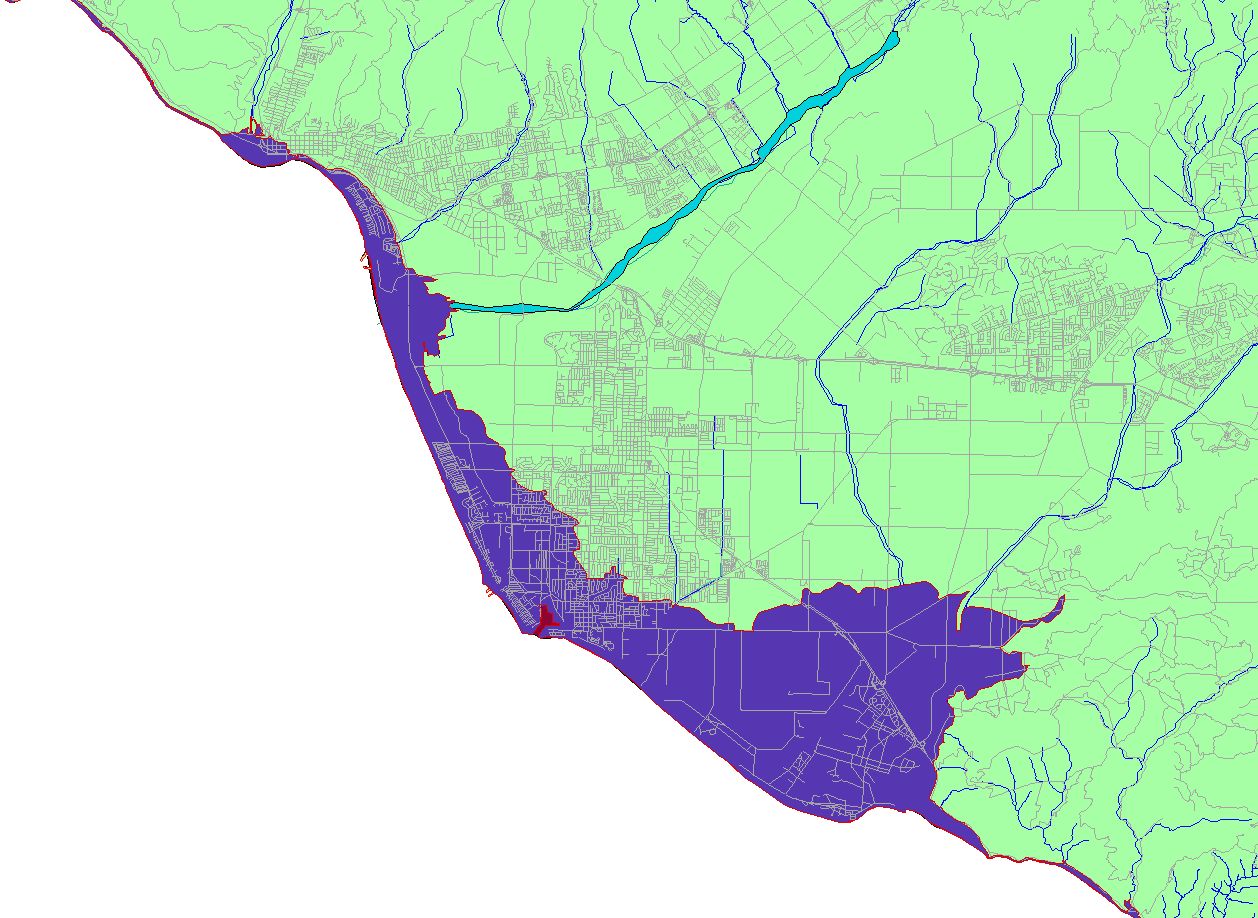CALIFORNIA NATIVE PLANT SOCIETY
Channel Islands Chapter
Channel Islands Chapter
Conservation Issue:  Global Warming Effects on Local Flora
Global Warming Effects on Local Flora
 Global Warming Effects on Local Flora
Global Warming Effects on Local Flora
Only a few now continue to disagree that global warming is a fact, a fact that we must think about when making long-term decisions and daily living decisions. Both humans and the natural environment, particularly the flora, will be variously affected by significant changes in global, translating to local, temperature. A recent (2008) article in the Los Angeles Times, "Climate Change Threatens Two-thirds of California's Unique Plants", By Margot Roosevelt, focuses on a recent study by collaborating scientists, says the state's plants are at risk of collapse unless they migrate or are moved to refuges. Animals may also be separated from plants on which they depend, according to researchers. The study concludes that two-thirds of California's unique plants, some 2,300 species that grow nowhere else in the world, could be wiped out across much of their current geographic ranges by the end of the century because of rising temperatures and changing rainfall patterns.
While climate change is a normal process on Earth, with some very wide global average temperature changes measured over geologic time, the rate of temperature increase the Earth is experiencing now is unprecidented. Whether or not this change is the result of mankind's industrialization and burning of fossil fuels is irrelevent to the native plants. Their habitat conditions are changing, and those conditions may reach the point that they can no longer survive in their current location. All species strive to survive, through propagation and dispersal, including humans, plants, and wildlife. The ability to migrate is paramount to their survival. With our current land use practices and land management in southern California, and much of California, the opportunities for the slow migration plants can achieve have been eliminated or are extremely limited or restricted. The ramifications are huge in that the flora is what our environment, or ability to survive here, is based on the native plants as the foundation of the local ecology.
Related to global warming is the marked increase in sea level, as a result of significant melting of the polar ice caps and Greenland's ice shield. While sea level rise is slow by human standards, some estimates have sea level rising by as much as 20 feet by the year 2100. Below is a map of the Ventura County coast showing where the shoreline would be if sea level rose by 20 feet.

This map is centered on Oxnard, with streets shown in gray and the Santa Clara River in light blue and other streams and rivers in dark blue. As can be seen, a significant portion of the Oxnard Plain would be under the ocean. Focusing only on the impacts this would have on native plant species and communities, a large number of species would become locally extinct because their specific habitat would be eliminated and current land use and development precludes them from migrating inland. All of Mugu Lagoon, McGrath Lake, the coastal sand dunes, and back dune swales that remain today would be inundated, and the City of Oxnard would do nothing to permit plant migration; rather, it would spend its resources protecting homes and businesses, not the natural environment. All of the City of Port Hueneme would be inundated; all of the beach communities would be inundated. This level of sea level rise may be extreme; however, if the current trend of sea level rise continues, it WILL happen. The effects of sea level rise, regardless of exactly how high it will get, will be more than the extent inland the mean sea level line is, as high tides and storm surges will put that line even further inland.
Some of the plant species that would be extirpated from Ventura County, and possibly the state, include:
Your help is needed to assist CNPS in properly challenging the lack of consideration and avoidance of impacts to native plants and sensitive plant communities this inevitable event represents. You can help by donating money and/or time to CNPS. Send a generous donation today to CNPS at P.O. Box 6, Ojai, CA 93024. Also, tell your local representatives that they need to think long-term in their land use policies and decisions to allow for means and avenues for natural plant migration inland as sea level rises.
David Magney, President, CNPS Channel Islands Chapter
More Information
Get more information from the following websites:
NASA - Global Warming Effects
Planet Earth - Global Warming
NASA - Sea Level Rise, After the Ice Melted and Today
Arizona State Univ. - Sea Level Rise
Seattle Times - Global Warming
Cato Institute - Global Warming
NRDC - Global Warming Basics
Union of Concerned Scientists - Global Warming
National Geographic - Effects of Global Warming
CHANNEL ISLANDS CHAPTER, CALIFORNIA NATIVE PLANT SOCIETY, PO Box 6, Ojai, CA 93024-0006
Special thanks to Carlin Moyer for the beautiful illustration of Toyon on this page.
For website comments: webmaster(at)cnpsci(dot)org
CNPS
HOME | SITE MAP | CHANNEL ISLANDS CHAPTER HOME